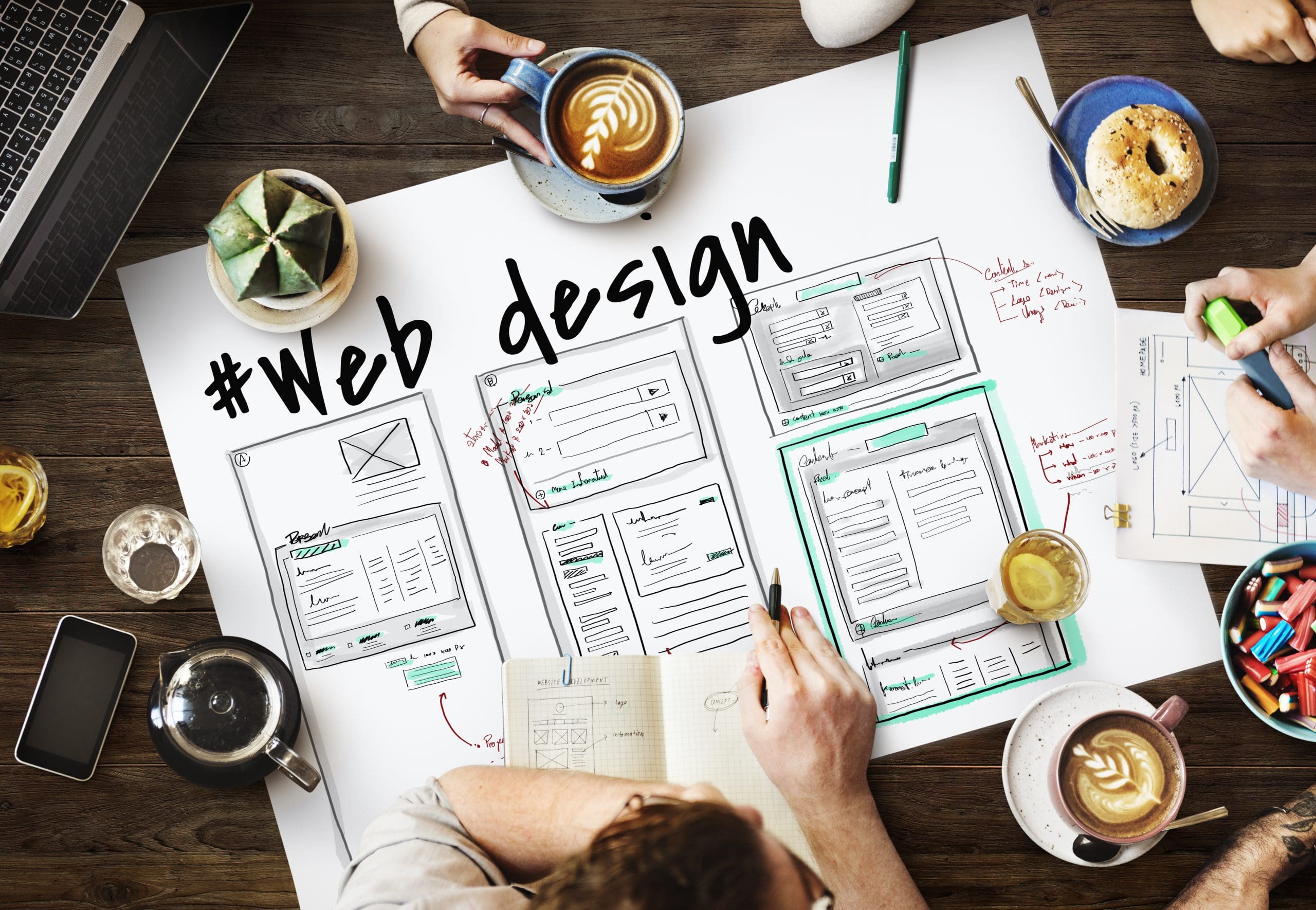How to Efficiently Incorporate Aesthetic Appeals and Performance in Website Design
When designing a web site, you require to strike an equilibrium between aesthetic appeals and functionality. It's not nearly looking good; your layout must also offer a purpose and guide individuals properly. By concentrating on simpleness and intuitive navigation, you can develop an interesting experience. What components genuinely enhance functionality while preserving aesthetic appeal? Allow's discover the key concepts that can result in an unified mix of appeal and function.
Understanding the Relevance of Aesthetic Appeals and Capability
Comprehending the balance in between aesthetic appeals and capability is necessary for producing an effective user experience when you develop an internet site. A visually enticing website grabs attention, but it's the functionality that maintains customers engaged. Site visitors will promptly shed interest and leave.Consider your target audience and what draws them in if your site looks excellent however is tough to navigate. You intend to create a layout that reflects your brand name while guaranteeing ease of use. Structured layouts, intuitive navigation, and clear phone call to activity can enhance both looks and capability.

Principles of Efficient Website Design
To create an efficient internet design, you require to follow a number of vital concepts that enhance both customer experience and aesthetic allure. Initially, focus on simpleness; a clean design aids customers browse conveniently. Use a constant color plan and typography to preserve coherence throughout your site. This cultivates experience and trust.Next, assure your layout is receptive. Users gain access to websites on numerous gadgets, so your layout ought to adapt effortlessly. Pay interest to visual pecking order; highlight crucial elements with size, placement, or color to guide individuals' focus.Finally, include enough white room. It stops clutter and makes web content a lot more absorbable. Remember, reliable internet design balances aesthetic appeals and performance, so every style choice need to offer a function. By adhering to these concepts, you'll create a website that's not just visually attractive but also user-friendly, eventually keeping site visitors engaged and urging them to return.
Focusing On Individual Experience
When prioritizing user experience, you'll intend to begin by recognizing what your users genuinely require. Simplifying navigating style can make a big distinction in exactly how easily they discover what they're seeking. Improving aesthetic hierarchy aids direct their attention to the most vital components on your website.
Recognizing Individual Needs
Understanding individual needs is essential for developing an interesting web experience that maintains site visitors coming back. To accomplish this, you must recognize the objectives and preferences of your target market. Start by conducting user research study, like interviews or surveys, to collect understandings on what customers value most. When engaging with comparable web sites, pay interest to their discomfort points and difficulties. This info allows you to customize your layout, making sure capability aligns with individual expectations. Furthermore, take into consideration creating user identities that stand for various sectors of your audience, helping you imagine their requirements throughout the style process. When you focus on recognizing customer demands, you create an internet site that not just looks fantastic however additionally supplies a smooth, delightful experience that cultivates commitment.
Streamlining Navigating Layout

Enhancing Aesthetic Pecking Order
A strong aesthetic power structure is necessary in assisting users through your internet site and ensuring they engage with key web content. To accomplish this, use size, spacing, and shade strategically. Make vital aspects like headings larger and bolder than body message, attracting focus quickly. Use contrasting colors to highlight contact us to action, urging clicks. Furthermore, utilize ample white area to separate areas, making material absorbable and inviting.Consider the circulation of info; arrange aspects logically, leading customers' eyes from one point to the following. Use aesthetic cues, like lines or arrowheads, to direct focus. By prioritizing aesthetic power structure, you improve customer experience and boost the probability of conversions, guaranteeing your web site is both aesthetically pleasing and functionally efficient.
Shade Theory and Its Effect on Use
While choosing the ideal shades for your site might look like a minor information, it greatly influences use and customer experience. Color impacts how users view details and can impede or boost navigation. As an example, contrasting colors can assist vital elements stand apart, making it simpler for site visitors to find what they need.Additionally, think about the psychology of shades: blue typically motivates count on, while red develops urgency. Understanding your target audience can assist your color options, ensuring they resonate well.Moreover, constant color schemes help build brand identity, making your website more memorable. However, beware-- way too many shades can bewilder individuals. Adhere to a restricted combination that complements your content and maintains clarity.Incorporating accessibility is additionally crucial; validate your color combinations get along for those with aesthetic disabilities. By attentively applying shade concept, you'll improve usability and create an extra engaging user experience.
Typography: Harmonizing Design and Readability
Shade options set the phase for your internet site, however typography plays an equally essential duty in improving user experience. You desire your text to communicate plainly while also mirroring your brand's personality. Beginning by choosing typefaces that are not only attractive however also understandable. Sans-serif font styles often function well for digital screens, as they're simpler to check out at different sizes.Maintain a power structure by utilizing various font style sizes and weights; this overviews individuals with your material effortlessly. Think about line spacing and letter spacing; too tight can frustrate viewers, while too loosened can interfere with the flow. Restriction your font options to 2 or three to maintain the design cohesive.Finally, constantly test your typography across various devices and internet browsers. What looks good on one display might not on an additional. Balancing design with readability guarantees that your message reverberates, maintaining your audience involved and educated.
Receptive Design: Making Looks Deal With All Tools
To guarantee your site looks fantastic on any type of device, you'll need to welcome responsive layout concepts. This strategy assurances your website adapts to various display sizes, providing an excellent user experience. Begin by making use of fluid grids and versatile photos that scale perfectly. Rather than dealt with measurements, choose percents and loved one systems, enabling your format to adjust dynamically.Next, carry out media queries in your CSS. These allow you apply various styles based on gadget features, like screen size. By doing this, you can keep aesthetic charm while guaranteeing functionality.Don' t ignore touch targets; make sure switches and links are simple to tap on smaller sized displays. Prioritize vital web content, so users can easily navigate your website despite their tool. By focusing on these aspects, you'll produce an interesting, visually appealing experience that meets the demands of all customers, whether they get on a smart device, tablet, or go to my blog desktop .
Carrying Out Usability Screening for Constant Improvement
To boost your website design, you require to set clear usability objectives that align with customer requirements. By conducting customer tests, you can collect useful comments on how real individuals connect with your website. Examining these results will certainly help you make educated enhancements and develop a much more reliable individual experience.
Specifying Functionality Goals
While appearances can draw customers in, defining functionality objectives is necessary for ensuring their experience stays rewarding and seamless. Start by identifying what you want customers to attain on your site (website design london Ontario). Consider their requirements, actions, and tasks. Are they trying to find information, making an acquisition, or enrolling in a newsletter? Establish clear standards to measure success, like task conclusion prices or time on task. Prioritize user-friendly navigating, obtainable material, and responsive style to improve use. Consistently revisit these goals as individual expectations progress. By specifying use objectives, you develop a structure for assessing and enhancing your web site's performance. This concentrate on usability not only increases customer satisfaction but also reinforces the general performance of your layout
Performing Customer Examinations
Performing individual tests is necessary for improving your internet site and guaranteeing it satisfies your audience's needs. Start by identifying your target users and developing an examination strategy that describes your objectives. Use a mix of measurable and qualitative approaches, such as surveys, interviews, and task-based observations, to collect thorough responses. Welcome individuals to navigate your website while you observe their communications and keep in mind any type of problems they encounter. Urge open discussion to record their thoughts and feelings about the layout and capability. Keep sessions short and concentrated, guaranteeing you cover vital locations without overwhelming users. Finally, make certain to document all searchings for, as this info will be invaluable for making enlightened layout decisions that enhance both visual appeals and usability.
Examining Test Outcomes
How can you properly examine the outcomes of your usability examinations to drive continuous renovation? Start by classifying feedback into usual themes. Seek patterns in user actions that highlight discomfort points or locations for improvement. Use measurable information, like task article conclusion prices and time on task, to determine use objectively. Do not neglect to consider qualitative understandings from customer comments; they usually expose underlying problems that numbers can not show. Prioritize one of the most impactful searchings for and create actionable products for your layout team. Keep in mind, it's concerning iterating-- carry out adjustments, then test once again. This cycle of screening, analyzing, and refining helps you balance aesthetics and performance, guaranteeing your internet site fulfills user needs successfully while keeping aesthetic allure.
Frequently Asked Questions
How Do I Select the Right Color Combination for My Internet site?
To pick the right color palette for your site, consider your brand name's character, target market, and psychological effect (website design london Ontario). Usage shade psychology, develop harmony, and guarantee readability. Test combinations to see what resonates finest with site visitors
What Equipment Can Aid With Internet Style Aesthetics and Functionality?
You can utilize devices like Adobe XD, Figma, and Sketch to improve your website design's aesthetics and functionality. These platforms use intuitive interfaces, cooperation features, and pre-made design templates to enhance your imaginative process and enhance your styles.
Just How Can I Integrate Animations Without Endangering Functionality?
To incorporate animations without endangering performance, prioritize refined impacts that enhance user experience. Usage CSS animations for smoother interactions, guarantee fast tons times, and examination on numerous devices to maintain performance while including aesthetic appeal.
What Are Common Blunders to Avoid in Website Design Visual Appeals?
When creating, stay clear of cluttered layouts, inadequate color choices, and irregular fonts. Do not neglect mobile responsiveness, as it can estrange users. Validate your style straightens with your brand, developing a seamless experience that involves visitors properly.
Exactly how Frequently Should I Update My Internet site's Design for Optimum Aesthetic Appeals?
You must update your web site's design every 1-2 years to stay on top of fads and maintain excellent visual appeals. Regularly restoring visuals aids engage site visitors and warranties your website remains easy to use and enticing. When you design a web site, comprehending the equilibrium between looks and capability is important for producing a reliable individual experience. To develop an effective web style, you require to stick to numerous vital principles that enhance both individual experience and visual charm. Customers accessibility websites on this numerous tools, so your layout should adjust effortlessly. When prioritizing individual experience, you'll desire to begin by recognizing what your customers genuinely require. Begin by carrying out individual research study, like studies or meetings, to gather insights on what individuals value most.